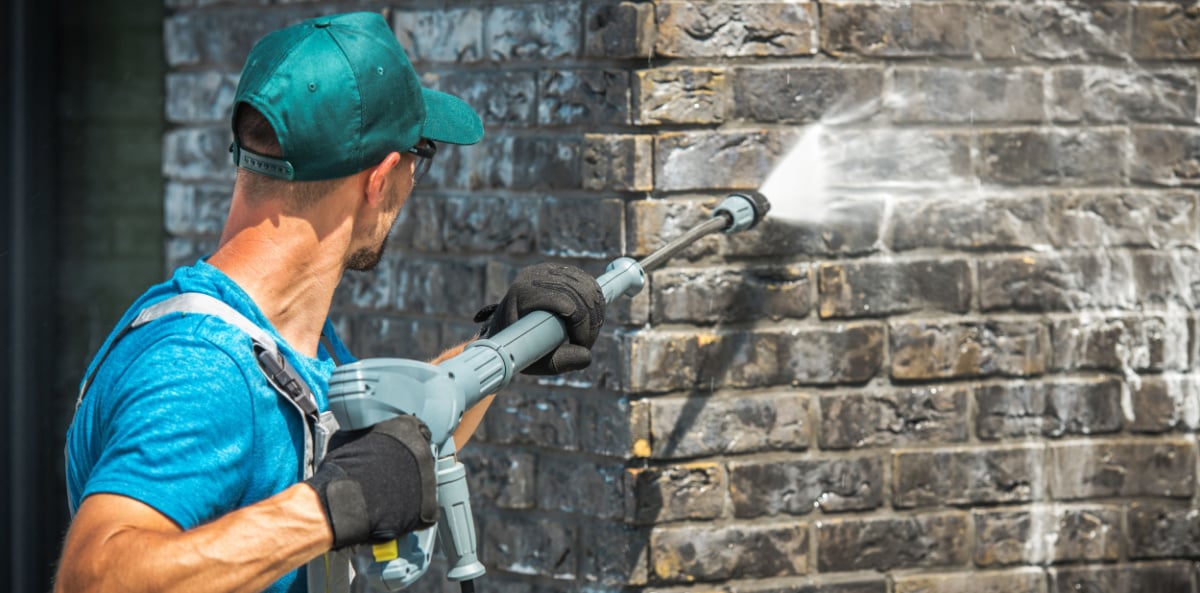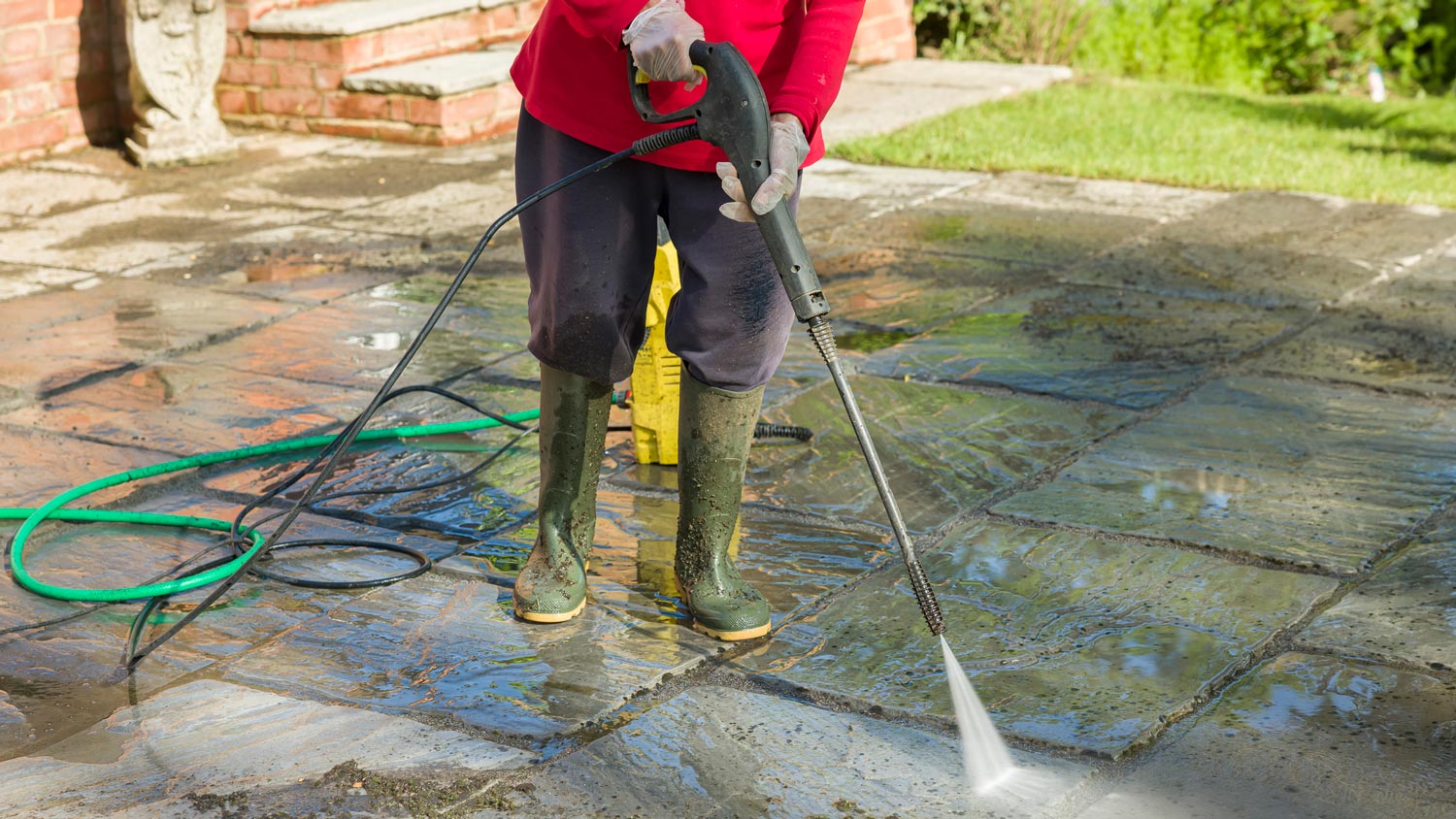Revitalize Your Home: The Ultimate Overview to Stress Washing
Pressure cleaning is an invaluable device for homeowners aiming to recover the visual appeal and long life of their properties. Recognizing the nuances of pressure ratings, tools option, and reliable cleaning techniques can substantially boost the exterior of your home. The procedure is not without its difficulties; inappropriate techniques can lead to damages rather than rejuvenation. To navigate these complexities and achieve optimum results, it is essential to check out the essential elements of stress cleaning, consisting of useful advice on resolving typical spots and making sure security throughout the procedure. What follows might change your strategy to home upkeep.
Understanding Pressure Washing
Stress cleaning is a powerful cleansing technique that makes use of high-pressure water spray to remove dirt, grime, mold, and various other impurities from different surface areas. This strategy is particularly efficient on tough surfaces like driveways, pathways, decks, and siding, where traditional cleansing approaches might fail. By utilizing customized tools that creates high-pressure streams of water, stress cleaning can permeate deeply into surfaces, efficiently dislodging and removing persistent particles.
The process is not only reliable however also eco-friendly, as it often counts only on water, lowering the need for harsh chemical cleansers. Furthermore, pressure washing can boost the aesthetic appeal of residential properties, preserving their value and lengthening the lifespan of surfaces by preventing degeneration triggered by pollutants.

Picking the Right Equipment
Choosing the ideal equipment is vital for achieving ideal lead to pressure cleaning. The first decision includes picking between electric and gas stress washing machines. Electric models are typically lighter, quieter, and suitable for property jobs like cleansing patios or automobiles. Gas units, on the other hand, use greater stress and circulation rates, making them perfect for larger tasks such as cleansing driveways or siding.
Following, take into consideration the stress ranking, gauged in extra pounds per square inch (PSI) For light-duty jobs, a stress washer with 1,300 to 1,600 PSI is adequate, while medium-duty jobs commonly call for 1,600 to 2,500 PSI. Sturdy jobs might require makers surpassing 2,500 PSI.
Furthermore, the flow rate, gauged in gallons per min (GPM), affects cleansing performance (Pressure Washing Lockhart). A greater GPM enables for quicker cleaning but might call for a lot more powerful equipment
Techniques for Effective Cleaning

The strategy of overlapping strokes is vital for even protection. Furthermore, preserving a regular range from the surface area, generally 12 to 18 inches, enables for reliable application without creating harm.
Making use of the correct nozzle is likewise vital. A wide-angle nozzle is excellent for larger areas, while a slim nozzle can target stubborn dust or grime. Furthermore, utilizing a sweeping movement rather than a fixed spray assists to stay clear of concentrated areas of stress, which could result in surface area damages.

Tackling Common Stains
When it involves preserving the look of outside surfaces, dealing with typical stains effectively is essential for prolonging their lifespan and boosting aesthetic charm. Various surfaces, including wood, concrete, and plastic, can accumulate discolorations from natural materials, oils, and environmental toxins, Home Page requiring a targeted method.
For oil stains, a mix of degreasers and pressure cleaning can produce outstanding results. Apply the degreaser to the tarnished area, allowing it to pass through before making use of a pressure washing machine to eliminate the residue. Organic discolorations, such as mildew or algae, often call for a remedy consisting of bleach or a devoted mold and mildew cleaner, adhered to by pressure cleaning to bring back the surface area's original appearance.
Rust spots, generally found on steel surfaces, might necessitate specific corrosion cleaners. Use the product and scrub the location prior to pressure cleaning to eliminate any kind of remaining staining. It is necessary to examine any cleansing remedy on a tiny, inconspicuous location first to avoid damage.
Security Tips and Ideal Practices
Making sure safety while pressure cleaning is paramount, as the high-pressure water can present substantial risks if not taken care of correctly. To safeguard on your own and others, constantly wear proper individual safety equipment (PPE), including security goggles, handwear covers, and sturdy footwear. This gear will protect you from flying particles and the possibility for injury.
Before beginning, inspect the pressure washer for any type of leakages or harmed components. Acquaint on your own with the tools's manual to recognize its operation and safety features. Furthermore, make sure the location you are resource functioning in is devoid of challenges which any electrical connections are risk-free from water exposure.
When operating the pressure washer, maintain a safe distance from surface areas and stay clear of intending the nozzle at individuals, family pets, or fragile objects. Use the correct nozzle for the task, as different nozzles generate differing spray patterns and stress levels. Be mindful of your surroundings: secure loose things, watch for electric lines, and prevent working in damp problems that may lead to slips or drops.
Verdict
Finally, stress washing serves as a vital device for home owners looking for to improve building visual appeals and longevity. By recognizing the ins and outs of devices choice, effective cleansing methods, and common discolor removal, the possibility for rejuvenating one's home becomes noticeable. Furthermore, adherence to safety procedures makes sure a effective and secure cleansing process. Eventually, the knowledge obtained from this overview gears up homeowners with the needed skills to keep and elevate their building's charm and worth effectively.
Pressure cleaning is an effective cleaning method that uses high-pressure water spray to eliminate dust, crud, mold, and other contaminants from different surfaces. By utilizing customized devices that creates high-pressure streams of water, stress cleaning can penetrate deeply into surfaces, effectively removing and washing away stubborn particles.
Nevertheless, it is necessary to recognize that stress cleaning needs a certain level of skill and understanding to prevent harmful surface areas. Softer materials like wood or painted surfaces demand a reduced pressure establishing to protect against damage, whereas concrete or block surface areas can hold go now up against greater stress degrees.
Organic spots, such as mildew or algae, typically require a remedy having bleach or a committed mold and mildew cleaner, complied with by pressure cleaning to recover the surface area's original look. - Pressure Washing Lockhart